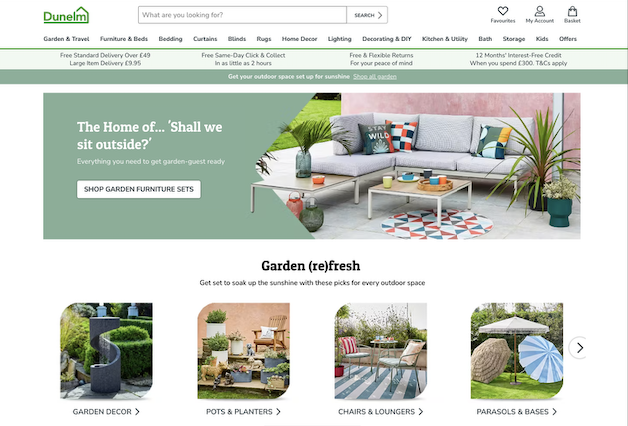
Sustainable ecommerce: UK retailers not yet minimising the carbon impact of their websites

- 1.3 million trees would need to be planted to offset the carbon generated by the 50 UK retail sites audited in the study
- The most digitally sustainable sites reviewed were Dunelm, Argos and Screwfix
- The lower the carbon impact of the site, the better it is likely to rank for performance measures impacting usability and SEO, such as site speed
- Check out some of the key data from the report in the infographic
Digital product agency Inviqa has measured the carbon impact of the UK websites of 50 leading retailers to demonstrate the role retailers’ digital and tech teams can play in delivering sustainable ecommerce.
Combined, the 50 websites benchmarked would require an estimated 1.3 million trees to be planted to offset the carbon generated by hosting the sites and loading the total annual page views on consumers’ devices.
To date, much of the emphasis on making ecommerce operations sustainable has focused on packaging reduction, intelligent delivery routing and the sustainability of the products sold. Digital sustainability – actively trying to reduce the power requirements and carbon emissions generated by the operation of ecommerce sites – is an additional element that retailers should consider.
Most digitally sustainable sites ranked
Inviqa benchmarked the ecommerce sites of 50 UK retailers using the Ecoping carbon scoring tool, which assesses them based on the carbon weight of each page plus Google’s Lighthouse score to provide an EcoScore. We also calculated the average carbon weight per page view of each website. Three types of pages were tested per website to generate each retailer’s average score, and allow us to fairly compare sites against each other when their total page numbers and page views will vastly differ.

The most digitally sustainable sites per page were Dunelm, Argos and Screwfix. The top scoring sites achieved 66 out of 100 using Ecoping’s EcoScore measurement. Retailers should be aiming for a score of 90 or more to be considered truly sustainable ecommerce sites.
Other retailers who featured in the top 10 of the results were: Sports Direct, Moonpig, Hillarys, Victorian Plumbing, WHSmith, Primark and Cotswold Outdoors.
The highest traffic website in the study – Amazon.co.uk – placed in the bottom 10 of the 50 ranked sites with an EcoScore of 39. The bottom scoring site achieved an EcoScore of just 13.
Sustainable ecommerce: where to start
Both technical and design changes can contribute to lowering the carbon weight of website pages, including font, colour palette, image and video formats and ensuring that unnecessary software code is removed. Using green web hosting and a content delivery network also helps to minimise the power requirements of operating the site and serving web pages (particularly when you have a geographically distributed audience).
Many of the improvements retailers can make to reduce a website’s carbon impact will also have positive benefits for the site’s usability; such as faster page load times.
“We believe that UK retailers want to create sustainable ecommerce operations. 92% of the 50 retailers we benchmarked had sustainability information on their websites. However, there is little awareness of the environmental impact of the energy required to power web experiences and so this has yet to be a real area of focus,” commented Inviqa’s Marketing Director Joanna Perry.
“Measuring your ecommerce site’s carbon impact is the first step to managing it, and then taking steps to actively reduce it. We urge all retailers to investigate digital sustainability and add it to the excellent environmental initiatives many already have in place.”
Download Inviqa’s free Retail Digital Sustainability Report now




